The quality of cotton is essential for the processing of the natural fibre. The expression of various quality characteristics is therefore relevant for the pricing and trading of cotton. Cotton testing and classing on the basis of these and other characteristics has been one of the core tasks of the Bremen Cotton Exchange since its foundation in 1872.
Cotton quality characteristics and terms
Staple length
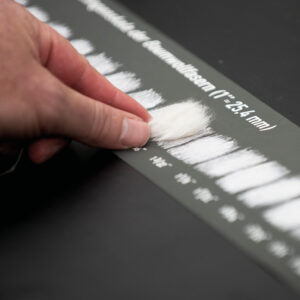 The length of the individual fibres is a significant criterion for the quality of the cotton. It determines how well the cotton can be spun into a yarn. The longer the fibre, the finer it can be spun.
The length of the individual fibres is a significant criterion for the quality of the cotton. It determines how well the cotton can be spun into a yarn. The longer the fibre, the finer it can be spun.
The cotton fibre can reach a length between approx. 3/4” (18 mm) and approx. 1.3/4” (45 mm). In the global cotton trade, the length of the fibre is given in inches. A length of about 1.3/32” and 1.1/8” is now considered standard for most cotton. From about 1” (25 mm) upwards, it is considered as a medium staple quality, which is predominantly produced in the world. From approx. 1.7/32” (31 mm) it is referred to as long staple cotton, the most important producer is Egypt. Extra-long staple quality is achieved at a length of more than approx. 1.3/8” (35 mm). The best-known cotton here is the American Pima cotton.
Micronaire
 Staple length is the term used to describe a specific bundle length of all the fibres from a fibre sample. The term originates from the manual classification of cotton for quality determination. To do this, a sample is taken from the cotton in question and a fibre bundle is created using a specific technique. Then reference lengths and experience are used to determine the lengths. Even today, manual classification still retains its significance, especially when disputes arise.
Staple length is the term used to describe a specific bundle length of all the fibres from a fibre sample. The term originates from the manual classification of cotton for quality determination. To do this, a sample is taken from the cotton in question and a fibre bundle is created using a specific technique. Then reference lengths and experience are used to determine the lengths. Even today, manual classification still retains its significance, especially when disputes arise.
The micronaire value is a measure of the fineness as well as the degree of maturity of cotton. Besides the staple length, it is another decisive criterion for the spinnability of the fibres and also provides information about the susceptibility to neps and the dyeability (immature fibres are less dyeable).
The value is determined by measuring air flow resistance. For this purpose, a defined amount of cotton is placed in a measuring chamber and the flow resistance of the fibres is measured. One gram of coarser fibres has less surface area than one gram of thin fibres, which is why the air encounters less resistance with the coarser ones. The air also has less resistance with mature fibres than with immature ones. So overall, coarser and more mature fibres show a higher Micronaire value.
Micronaire values for cotton range from about 2 to 8, where 2 is for fine fibres and 8 is for coarse fibres.
2.4 – 3.4 very fine (Pima)
2.5 – 3.9 fine (Upland)
4.0 – 4.9 medium (normal range)
5.0 – 5.9 slightly coarse
6.0 – 6.9 coarse
In the textile industry, other measures of fineness are used for fibres and resulting yarns, which indicate the fineness from direct measurements. For cotton, the micronaire value in particular has become established, while for synthetic fibres and yarns the unit of measurement “tex” is used to indicate fineness. A conversion of the determined micronaire values into dtex in practical use is usually not carried out.
Historically, the Micronaire determination, together with the Pressely method for determining fibre strength, is one of the first physical testing methods for cotton that became established after the Second World War. These complemented the purely manual and visual classifications of the natural fibre up to then.
Colour Classification and Coloured Cotton
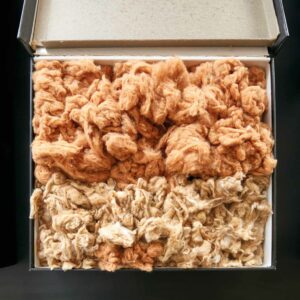 In traditional quality assessment, cotton is divided into colour classes. White is considered the best quality, while grey, yellow or brown discolourations are signs of poorer quality.
In traditional quality assessment, cotton is divided into colour classes. White is considered the best quality, while grey, yellow or brown discolourations are signs of poorer quality.
Yellowish stains in cotton can be an indication of pest infestation. Yet sometimes, very high temperatures also lead to yellowish discolourations. Cotton exposed to precipitation at the end of the maturing period might turn grey. Cotton’s intrinsic colour is taken into account in the blending process in the spinning mill and affects the dyeability, among other things. If necessary, a bleaching process is required during processing. This in turn, though, will influence other fibre properties such as strength.
Aside from classic white cotton there are also natural coloured cotton varieties. Other natural colours of cotton are mostly brown and green in partly varying intensity. Red and blue colouration occur very rarely and are not commercially grown. In some varieties, the colour persists or even intensifies when washed, while in others it does not. Usually, the fiber quality is less pronounced in coloured cotton.
Grade
The traditional classing of co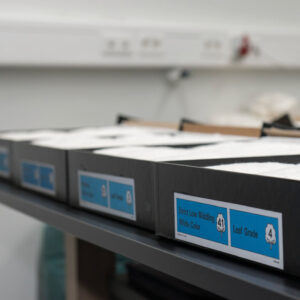 tton comprises the manual and visual quality assessment with respect to three essential characteristic traits: Trash content, color and length.
tton comprises the manual and visual quality assessment with respect to three essential characteristic traits: Trash content, color and length.
The term grade refers to the apparent impression of an appropriately prepared cotton sample. This includes gloss, grayish and yellowish discolorations as well as the proportion of trash, like leaves and other plant parts such as stems or seed fragments. The quality grades according to the most widely used reference system for US cotton range from Good Middling (best grade) through further gradations to Good Ordinary (lowest grade). The main factors that influence cotton’s trash content are the method of harvesting as well as ginning. Cotton harvested by machines usually has a higher trash content and is cleaned extensively before and during ginning. Hand-picked cotton has fewer of these problems, but non-organic contamination occurs more often. The more elaborately the cotton has to be cleaned, the greater the likelihood that fibres will be damaged in the process and that length, an important price component, will suffer. It is thus necessary to find the ideal stage of cleaning to maintain the fiber quality.
Contamination (Trash)
The degree of contamination in cotton is part of the quality characteristic “class”. In general, any contamination is first and foremost trash.
In the spinning mill, however, depending on the type, it can affect processing and influence the quality in the final product. If necessary, spinning mills have to take further cleaning measures. Last but not least, contamination also affects the purchase price. Cheaper, leafy cotton is used for lower quality products. Therefore, knowledge of the dirt content is important for cotton processors and a component of quality guarantees in a contract. Contaminants represent a significant cost factor for spinning mills.
Contaminants also depend on the harvest
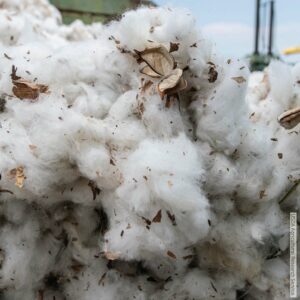 The natural fibre cotton grows in the field, so natural impurities such as leaf residues, stalks and bud parts often get into the raw material. The degree to which the cotton is contaminated depends on the harvest method and the subsequent ginning process. During manual harvesting, the pickers can carefully grab the seed hairs and pull them out of the bud. Fewer plant parts usually end up in the harvested seed cotton. However, manual harvesting poses the risk of other contaminants getting into the cotton, such as clothing fibres or fabric. The type of ginning and especially the settings of the machines and the number of cleaning stages used also have an influence on the level of contamination.
The natural fibre cotton grows in the field, so natural impurities such as leaf residues, stalks and bud parts often get into the raw material. The degree to which the cotton is contaminated depends on the harvest method and the subsequent ginning process. During manual harvesting, the pickers can carefully grab the seed hairs and pull them out of the bud. Fewer plant parts usually end up in the harvested seed cotton. However, manual harvesting poses the risk of other contaminants getting into the cotton, such as clothing fibres or fabric. The type of ginning and especially the settings of the machines and the number of cleaning stages used also have an influence on the level of contamination.
According to ITMF* surveys, the most contaminated cottons continue to originate from India, Turkey, Africa (various countries) and Central Asia, while the least contaminated cotton comes from the USA, Israel, Australia – i.e. countries with general machine picking – and certain countries in West Africa.
*Source and further reading is this summary of the presentation by Marinus van der Sluijs entitled ‘Contaminants in Cotton – Still a Major Issue for High Quality Products’, which he gave at the International Cotton Conference Bremen 2021.
Strength
 Fibre strength is the resistance of fibres to forces applied to them. These include tension, compression, friction and torsion (twisting).
Fibre strength is the resistance of fibres to forces applied to them. These include tension, compression, friction and torsion (twisting).
The strength of textile products such as fibres and yarns is usually assessed using tensile load.
In the case of textile fibres, the breaking force is given in relation to the textile fineness of the fibre or yarn. Due to the non-circular geometry of fibres and yarn, their fineness definition is based on the determination of mass/weight per length unit. The internationally prescribed fineness measure is the unit tex. Thereby
1 tex is the mass of 1 gram per 1000 metres. The strength is given in Newton (N) or Centinewton (cN). The strength of cotton under normal climatic conditions is 20-40 cN/tex. The strength values for commercially available cotton today are 28 cN/tex (g/tex) and higher. Strength is one of three standard guarantees in international trade.
Today, strength measurements of cotton fibre are usually performed with the HVI as a bundle measurement or with comparable instruments. Especially for the processing of cotton fibre in spinning mills, strength is considered to be one of the essential properties along with fibre length.
In surveys of spinning mills, strength is regularly among the most sought-after properties for all spinning processes.
Uniformity
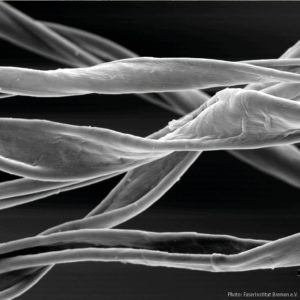 All textile fibres of plant origin are non-uniform, as their formation is subject to natural growth processes. Uniformity refers to the uniform or non-uniform length distribution of fibres in a fibre bundle.
All textile fibres of plant origin are non-uniform, as their formation is subject to natural growth processes. Uniformity refers to the uniform or non-uniform length distribution of fibres in a fibre bundle.
Characteristic values for uniformity are either based on measurement of the length of individual fibres, as for example by the fibre testing device AFIS, and thus give a good length distribution diagram of a fibre sample including the short fibres. Another measurement method, as in HVI, determines long fibres (UHML) and the mean fibre length (ML) of a fibre bundle. This distribution can provide information for the interpretation of other length parameters and the corresponding processing possibilities. In addition to the fibre length, the distribution is relevant in cotton processing.
In principle, the more uniform the better, because it means better spinnability and less waste during combing. Nevertheless, there is no such thing as a completely uniform fibre length in natural fibres and it is not necessarily desirable for processing. Depending on the desired product, textile surfaces can have a certain non-uniformity that people find pleasant – this includes fluffiness, hairiness, texture.
Standards
 All major cotton producing countries produce reference samples of the predominant cotton varieties and corresponding grades in their country.
All major cotton producing countries produce reference samples of the predominant cotton varieties and corresponding grades in their country.
These are called standards. They serve as reference material for comparative quality assessment. From this assessment, a value determination is derived that affects the price of the raw material. The US standards are most commonly used, as they are widely internationally recognized. Standards from about 40 cotton producing countries are stored in the Bremen Cotton Exchange and can be used as comparative material in case of disputes. For all common standards, cotton organizations such as the Bremen Cotton Exchange or the International Cotton Association provide value differences.
Value Differences
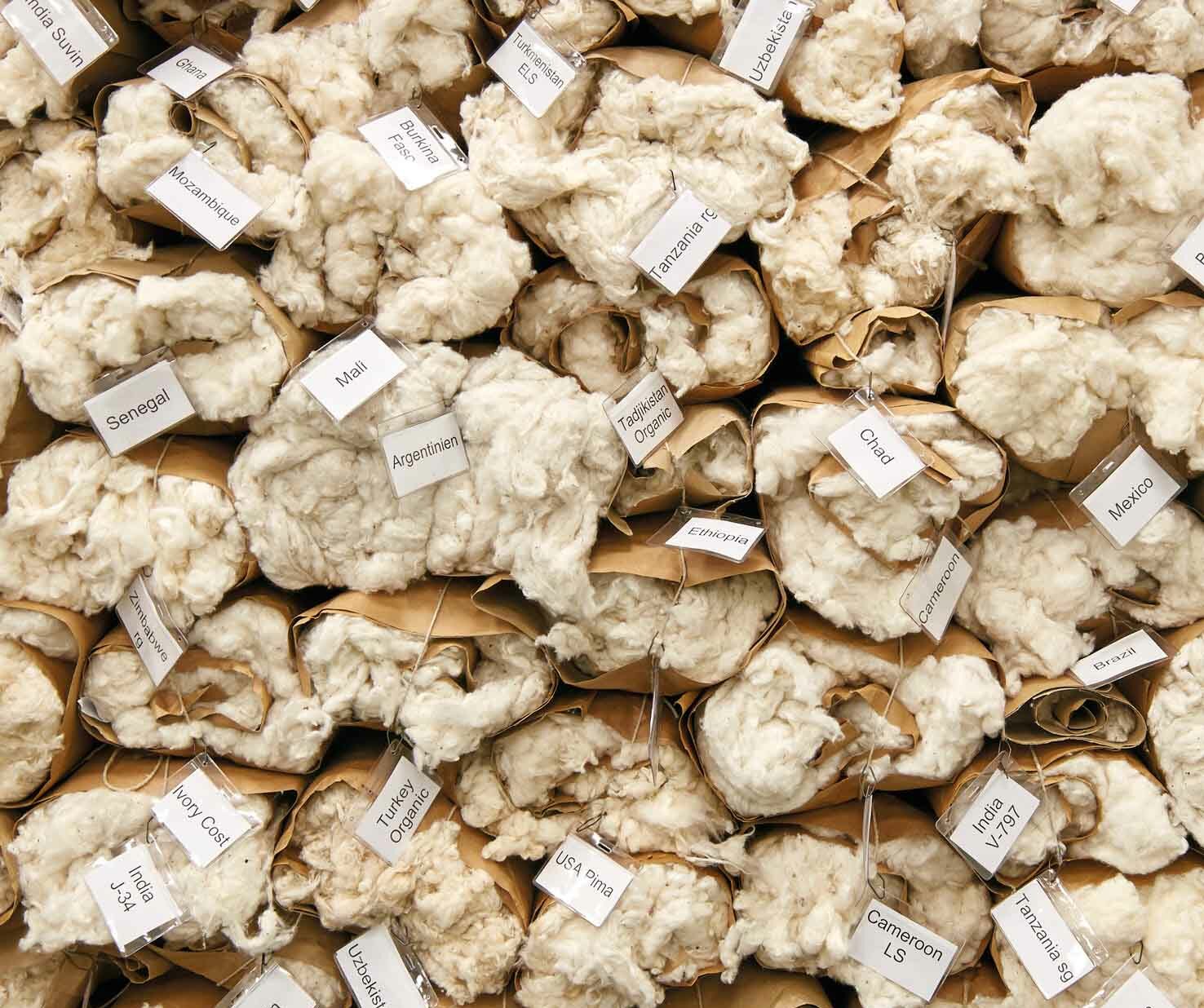 The value differences for the respective standards record the price gradations for different grades and other quality characteristics.
The value differences for the respective standards record the price gradations for different grades and other quality characteristics.
This includes, for example, the type of ginning for some qualities (rollerginned vs. sawginned). If disputes arise over quality, the value differences determine the amount of the price for deviations from the agreed quality. These are based on market values but are not very flexible. Value differences increase the comparability of different qualities. Additionally, they give buyers and sellers an orientation for discounts or premiums in negotiations.
The Bremen Cotton Exchange determines the value differences in cooperation with the International Cotton Association, Liverpool. They are updated at irregular intervals.
